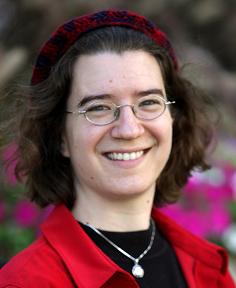Environmental Justice and Interreligious Ecotheology
When I begin a new course on “Religion and the Environment,” most students come to class assuming religious environmentalism is primarily concerned with “protecting nature.” They are almost uniformly startled when we begin by studying the Bhopal gas tragedy — the 1984 industrial–environmental catastrophe in which forty tons of toxic gas exploded from a poorly maintained Union Carbide pesticide factory, killing thousands of residents and exposing some of India’s poorest communities to devastating health consequences that continue to this day. The case draws critical attention to the brutal body costs of neocolonialism and corporate irresponsibility, centering our gaze on the race, class, and gender disparities of environmental violence. As students examine the grassroots response and chronicle the ongoing efforts to secure compensation for survivors, we frame a key question that grounds the course: How do religious responses to environmental crisis engage with — or turn away from — the ethical demands of environmental injustice?
Religious voices have played a critical role in birthing the environmental justice movement. In 1982, a grassroots movement led in large part by African-American church women protested the placement of a toxic waste landfill in a poor, predominantly black community in Warren County, North Carolina. In 1987, the United Church of Christ’s Commission for Racial Justice published a landmark study, “Toxic Waste and Race,” that chronicled the disproportionate toxic exposures born by U.S. communities of color — three out of five black and Hispanic Americans live in communities with an uncontrolled toxic waste site, as do half of all Asians/Pacific Islanders and Native Americans. Active community organizing has led to some progress, but a 2007 follow-up report by the United Church of Christ shows that environmental racism and injustice continue to remain entrenched patterns.
Yet within the academy, religious studies scholars and theologians have often paid less explicit attention to the intersections of justice, violence, and environmental harm. This issue of Spotlight on Theological Education asks how educators can more critically engage questions of justice as we teach ecotheology and religious environmentalism. The issue cultivates strategies and reflections for more thoroughly integrating race, gender, and class into environmental theology. It calls for an engagement with disability studies, attending to the increasing realities of environmentally induced disability and challenging the perception of disability as a solely individual experience. It highlights the importance of creative ritual as a tool for cultivating ecotheological insight and commitment. It also calls attention to the importance of thinking interreligiously about environmental theology — lifting up the theological insights of scholars writing from non-Christian traditions.
Larry Rasmussen’s essay asks how religious communities and theological educators can help us better prepare for life in the Anthropocene era, an era of rapid human-induced planetary change. Rasmussen lays out the transitions that humanity must undertake to become a viable species, living lives of mutual enhancement with all other living beings. He suggests that religious communities can be central to this transformation in culture and consciousness if religious ritual, symbolism, and practice are reimagined and revisioned for a new ecological age. Rasmussen reflects here on the pedagogy of “Earth-honoring Faith,” a ten-year project at Ghost Ranch that brings together clergy, lay leaders, and scholars to cultivate multidisciplinary knowledge and critical religious imagination in order to develop new ecoreligious practice. He calls on religious communities to embrace the task of planet-keeping and the moral obligations of creation justice.
While Rasmussen calls for creation justice to become “a common calling” that unites religious communities, Cynthia Moe-Lobeda highlights the problem of privilege that makes certain communities simultaneously able to benefit from, and distance themselves from, the most overt costs of environmental harm. She argues that the present state of widespread moral oblivion to climate change represents a devastating and far-reaching example of white privilege and class privilege. Moe-Lobeda examines the pedagogical challenges of theological education that draws students’ critical attention to environmental injustice. Her essay shares teaching strategies for developing a three-part moral vision:
- Analyzing the problems of power and the realities of injustice
- Attending to the sustainable alternatives and resistance movements that are present, but rarely acknowledged in dominant discourse
- Cultivating an awareness of Spirit that inclines toward justice and draws us to abundant life for all people and all beings
Engaging the ongoing grassroots struggles for environmental justice, Melanie L. Harris grounds her essay in the powerful legacies of African-American women’s protests against environmental racism. She lays out the theoretical framework of ecowomanist thought, emphasizing that the Womanist commitment to survival and wholeness demands an integrated response to racism, sexism, and environmental devastation. Harris aims to help students make connections between race, economics, gender, sex, and earth justice. Reflecting on her own pedagogy, she often juxtaposes ecotheology and environmental ethics with the work of ecoliterary authors such as Alice Walker. Harris also calls attention to the power of ritual in and beyond the classroom as a method for helping students transform their learning into a lived commitment to environmental justice.
Sharon V. Betcher’s essay examines the importance of integrating disability into our analysis of ecotheology and environmental justice. Bridging her scholarship in disability studies and her work in environmental studies, Betcher emphasizes that environmental devastation is increasingly causing disablement. In the Anthropocene era, she argues that environmentally induced disability is a form of human-on-human violence and a manifestation of our violence against the earth. Yet she resists the move to position disability solely as a “scare tactic” designed to promote better ecological citizenship. In contrast to the prevailing tendency to view disability as an individual tragedy marked by pathos and personal suffering, Betcher argues that disability is one form of bodily responsiveness to the vagaries and complexities of embodied life. She calls us to reconceptualize disablement in communal terms, to think of how we are collectively affecting our common human flesh, and to attend to the way the elements of life speak to and through our bodies.
Centering attention on the problem of violence that has surfaced in several earlier essays, Pankaj Jain raises up the Hindu, Jain, and Buddhist commitment to ahimsa (nonviolence) as a critical environmental value. He calls for Western environmentalists and theologians to learn from the example of Gandhi and the wisdom of the Indic traditions, emphasizing the importance of grounding ecological action in the principles and practice of nonviolence. Jain chronicles the work of Indian activists, reformers, and community leaders whose commitment to ahimsa inspires them to resist violence and imperialism, to counter pressures for rampant industrialism and consumerism, and to improve the well-being of earth, humans, and all beings.
Where Jain critiques the West’s tendency to “make war” on everything, from climate change to terrorism, Sandra B. Lubarsky challenges the Western inclination to turn away from beauty. Accentuating the premodern conviction that the beauty of creation reflects and expresses the nature of God, Lubarsky links the modern disinterest in beauty with the disenchantment of the world. Beauty, she suggests, can inspire our environmental concern and draw us more fully into the life of the world. Returning full circle to Rasmussen’s call to transform our worldviews by reimagining religious ritual, Lubarsky highlights the ecological potential of the Jewish practice of hiddur mitzvah, embellishing and beautifying the commandments. Refashioning this practice as a touchstone to increase our awareness of and appreciation for earth’s beauty, she suggests that an obligation to cultivate beauty urges us to look beyond ourselves — drawing us to participate in and enhance the beauty and well-being of earth and all creation.
By centering on new directions in ecology and theology, these essays invite readers to more fully integrate concern for justice into ecological theologies and pedagogies. They ask readers to consider anew the potential and power of religious ritual in places of worship, at protest sites, and in the classroom. And they call for renewed commitment to interreligious teaching and learning as we engage in the critical practice of ecotheology and ecojustice.

Julia Watts Belser is assistant professor of Judaism in the religious studies department at Missouri State University. She studies rabbinic literature and Jewish ethics through the lens of ecological criticism, queer-feminist perspectives, disability studies, and postcolonial thought. Watts Belser received her PhD from the joint program in Jewish studies at the University of California, Berkeley, and the Graduate Theological Union, as well as rabbinic ordination from the Academy for Jewish Religion, California. In 2011–2012, she held a research fellowship at Harvard Divinity School in the women’s studies in religion program. Watts Belser’s first book, Covenantal Ecology: Rabbinic Responses to Drought and Disaster, is currently under review. She is working on a second book, Fashioning Catastrophe: Gender, Sexuality, and Ecology in Talmudic Disaster Tales. Other projects in progress include Jewish feminist environmental justice, religious responses to climate privilege, and the intersection between disability studies and environmental ethics. Watts Belser is a member of the AAR’s Theological Education Committee.

 by dsearls
by dsearls
- Log in to post comments
 Printer-friendly version
Printer-friendly version

